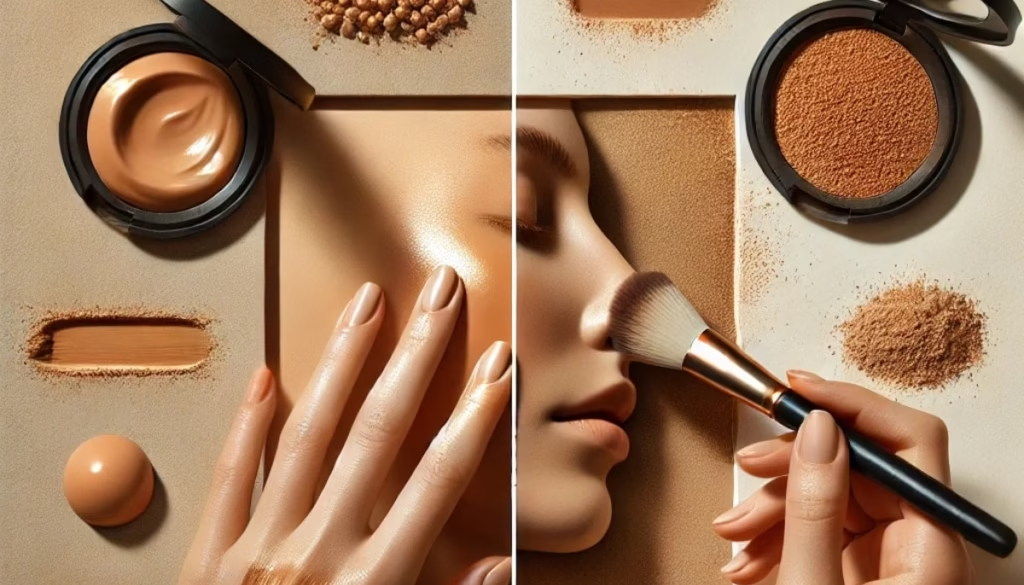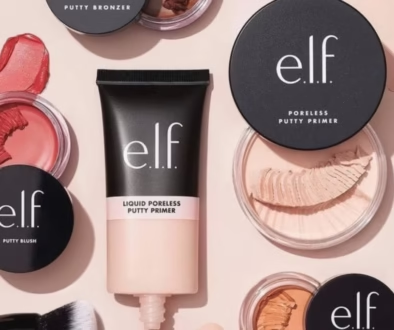Cream vs Powder Bronzer: Which Is Best for Your Skin
Cream vs Powder Bronzer: Finding the Perfect Formula for Sun-Kissed Skin
It’s that time again the sun is shining brightly, days are longer, and achieving that radiant, sun-kissed glow is in full swing. Summertime is the ideal season to explore the world of bronzers, a makeup essential for warmth and dimension.
However, there is a common misconception that bronzing and contouring are somehow the same. No further from the truth could one have been.
Contouring deals mainly with sculpting the face as it adds depth and dimensions with cooler undertones whereas bronzers work their magic to bring the desired warmth, glow, with a more natural look which is sun-kissed, and so on. That means knowing the difference in making the right makeup would take you to the right track.
When it comes to choosing between cream and powder bronzers, a big role is played by skin type and texture preferences:
Cream Bronzers: This is a great option for dry skin types because of their emollient nature. They are very easy to blend and create a soft, dewy finish that has the look of natural skin.
Powder Bronzers Powder bronzers are best suited for skin types that are oily as they control shine and last most of the day. However, even those with dry skins can enjoy newer powder bronzes, such as the collection Pure Bronze, to give a soft touch or blend well without emphasizing on dryness.
If you have oily skin, stay away from highly shimmered bronzers that can exaggerate the look of your texture and make you look over-shiny. Matte and soft satin finishes will give a warm effect without exacerbating oiliness.
How to Find Your Undertone: The Key to Perfect Bronzing while it does include formula choice, finding the best bronzer has to do so much more with knowing and understanding your skin’s undertones and depth for most natural-looking bronzing. Quick reference guide here on undertones:
WARM: Peaches to golden or yellow undertone.
COOL: Sort of pink or blue-pink or bluish undertone, more red-skinned.
NEUTRAL : A mix between cool/warm.
Your undertone determines how your skin looks when it tans, which can help determine the best bronzer shade:
Lighter Skin Tones with Warm Undertones: Skin tans peachier. Choose a bronzer with a peachy or neutral tan base.
Light to Medium Skin with Warm Undertones: Skin tans golden. opt for bronzers with copper or golden hues.
Deeper Skin Tones with Warm Undertones: Skin tans deep bronze. Select rich, chocolate-toned bronzers.
Lighter Skin Tones with Cool Undertones: Skin tans rosier. Look for bronzers with rosy or pinkish tones.
Light to Medium Skin with Cool Undertones: Skin tans to a cinnamon hue. A tan shade bronzer with a hint of cinnamon works best.
Deeper Skin Tones with Cool Undertones: Skin tans reddish. Choose deep brown bronzers with red undertones.
Neutral Undertones: Skin can burn then tan, without any strong undertone. Beige-based bronzers are best because it avoids pulling too red or orange.
General rule is that the bronzer selected must be one to two shades darker than the person’s natural skin tone to provide a sun-kissed effect but not appear heavy or unnatural.
How to Apply Bronzer for Natural Sun-Kissed Glow
Selecting the right bronzer is only half of the process. Proper techniques when it comes to application are vital for attaining that ultimate natural-looking glow.
Here’s a step-by-step guide:
1. Prep Your Skin
If you’re using bronzer with other complexion products like foundation or tinted moisturizer, apply a light dusting of translucent powder first.
This prevents bronzer from sticking unevenly to wet or tacky areas of the skin. For cream bronzers, blend them directly onto the skin after foundation or tinted moisturizer.
2. Placement is Key
Just like contouring has its rules on placement, so does bronzer. The point is to apply bronzer where the sun naturally hits your face for a believable warmth:
Sides of the Forehead: Sweep bronzer along the outer forehead and around the temples in a “C” shape.
Cheekbones: Apply bronzer lightly on the high points of your cheeks, blending upward toward the hairline.
Tip of the Nose: Apply a light dusting to the bridge and tip of the nose for a sun-kissed glow.
Chin: Sprinkle a light dusting of bronzer on the center of your chin to pull the look together.
Neck and Décolleté: Be sure to blend bronzer down into your neck and décolleté for a finished look.
For an added glow, use a shimmer bronzer on the high points of your face, namely the cheekbones, the bridge of the nose, and the temples. This enhances radiance and creates a more dimensional look.
3. Tools Matter
The right tools can make all the difference in achieving a natural, seamless finish.
A fan brush is perfect for powder bronzers because it applies product lightly without overloading the skin.
Remember, bronzer is meant to add warmth, not coverage, so a soft, diffused application works best.
For cream bronzers, a dense stippling brush or makeup sponge helps blend the product smoothly into the skin without harsh lines.
Bronzer Tips for Every Occasion
Bronzers are so versatile and can add to both full-glam and minimal makeup looks. Here are a few tips to get the most out of your bronzer:
For Everyday Wear: Use a matte bronzer for a natural, sun-kissed effect. Pair it with a tinted moisturizer for an easy, fresh-faced look.
For Photos: Avoid bronzers with a really shimmery finish. Light will reflect from these products, which will accentuate your texture. Instead, try a satin or matte finish.
For No-Makeup Days: A bronzer can be applied along the forehead, cheeks, and nose to add the warmth to your complexion without being cakey or overdone for everyday life.



